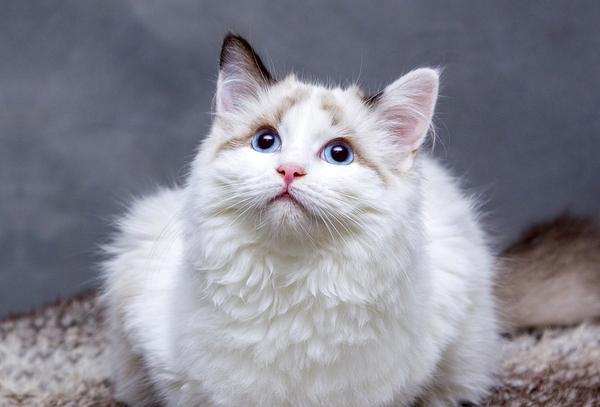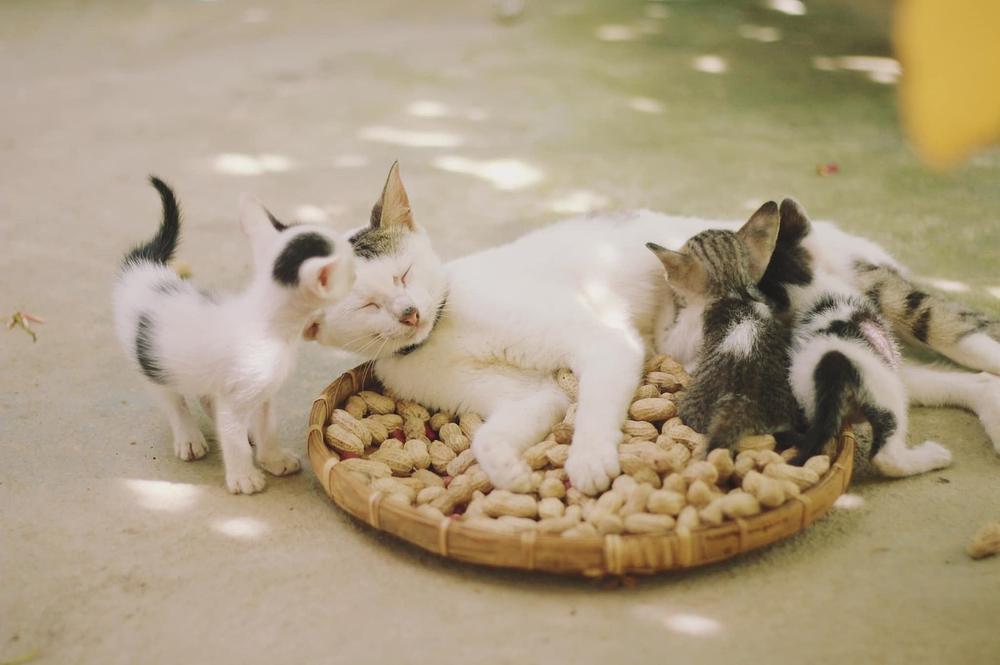How Do Cats Mark Their Territory: Everything You Wanna Know

Want to understand how cats mark their territory and take control of your home?
Ever walked into your living room only to be hit with that unmistakable scent of cat urine? 😷
Yeah, I know exactly what you're thinking:
"Seriously, why is my cat doing this? Is there any way to stop it?"
Believe me, I've been there, cleaning up mess after mess, desperately trying to reclaim my space.
But don't worry, because in this blog post, I'm going to reveal the secrets behind how cats mark their territory and share some key training tips to help you regain control.
You ready?
Let's dive in.
Understanding Cat Territory and Marking Behavior
To understand cat territory and marking behavior, here are 10 key points you should know:
- Cats engage in scent marking to communicate with other cats and establish territorial boundaries.
- Scent glands on the face, body, and paws release pheromones that cats use for marking.
- Scratching helps cats maintain their claws and leave their scent.
- Both male and female cats spray urine as a form of scent marking.
- Anal glands also produce scent material when cats defecate.
- Indoor cats mark territory through rubbing, rolling, and headbutting.
- Scent marking informs others of a cat's presence, property ownership, activity, and readiness to mate.
- Neutering reduces urine spraying in male cats.
- Spaying and neutering, having bonded pairs of cats, and providing positive experiences can help prevent marking behavior.
- Differentiating between litter box problems and urine marking requires thorough examinations and tests to rule out medical causes.
Understanding these behaviors and meeting cats' needs is essential for proper care.
Cats have their own language - it's our job to listen and respond appropriately. 😺
Main points I'll expand upon further down this article:
- Avoid punishing or scolding cats when training them to stop marking.
- Neutering can help reduce spraying, but may not eliminate it completely.
- Time, patience, and the right tools can train cats to use a toilet.
- Castration or neutering can change urine odor and reduce spraying motivations.
- Some cats may still spray even after being neutered or spayed.
- Medications like antidepressants or anti-anxiety drugs can help control marking behaviors.
- Consult a vet to rule out any medical issues if your cat displays inappropriate toileting.
- Understanding the underlying reasons for scent marking can be helpful in deterring it.
- Common triggers for cat marking include medical issues, stress, and behavioral factors.
- Addressing urine marking involves using pheromone products, reintroduction strategies, and stress reduction.
But how can you effectively train your cat to stop marking their territory?

Stay tuned as I share some positive reinforcement techniques, the limitations of neutering, and even delve into the possibility of toilet training cats!
Plus, find out if medication could be a viable solution.
And remember, avoiding punishment is crucial!
How to Train a Cat to Stop Marking
Training a cat to stop marking can be tough, but it's doable. Here are some tips to help you out:
- Be positive and reward good behavior. When your cat scratches an appropriate spot or rubs in designated areas, give treats or praise.
- Avoid punishments or scolding because they only make things worse and scare your cat.
- Spaying or neutering can reduce spraying, but it doesn't always eliminate it completely. Some cats may still mark after being fixed.
- Talk to your vet about using medications like antidepressants or anti-anxiety drugs. They might help control marking behaviors.
- If your cat pees or marks inappropriately, see the vet to check for any medical issues.
- Figure out why your cat is marking territory. It could be stress, anxiety, or territorial disputes. Addressing these underlying problems can discourage marking.
- Patience is crucial! Results may take time, so stick to a routine and offer plenty of scratching options and enrichment for your cat.
By following these strategies, you'll be on your way to stopping marking and creating a happier living environment for both you and your kitty.
And now, let's delve deeper into some practical ways to address the issue of marking and create a more harmonious environment for you and your feline companion!
I'll share with you some effective techniques that can help reduce stress-induced marking and tackle underlying health problems or behavioral factors...
Common Triggers for Cat Marking and How to Address Them
Introducing changes gradually can reduce stress-induced marking
Moving to a new home is tough for cats. It can make them mark their territory.
So, what should you do?
When you move, start by keeping your cat in a smaller space. Slowly give them access to the rest of the house. This will help them adjust easily.
Various triggers for cat marking
Did you know that cats have specific reasons for marking their territory?
It's true!
These triggers include medical issues, stress, and behavioral factors.
Here's something key to keep in mind:
If your cat starts urinating in inappropriate places or spraying, it could be a sign of health problems.
You might need to take your little feline friend to the vet!
Addressing urine marking
So how do you deal with this marking issue?
Well, you can try a few things.
First, use special products or deterrents to discourage marking behavior.

In multi-cat households, use reintroduction techniques and stress reduction techniques.
And here's a tip for you:
Making sure your cat has positive experiences can prevent marking behavior. Give them lots of love and treats!
Oh, and don't forget to clean those marks left from rubbing.
It's important for your cat to feel safe, you know?
Treatment options may vary based on location, frequency, and the number of occurrences.
Be extra vigilant if you have multiple cats living together.
They tend to spray more often.
And hey, before I wrap up this section on cat marking triggers, I want to let you in on a little secret.
If you're curious about why your cat holds your hand and what it could possibly mean, I've got a whole blog post dedicated to unraveling this adorable behavior.
If you're proactive about understanding your cat's habits, I highly recommend checking out Why Does My Cat Hold My Hand -- you might just uncover some fascinating insights about your feline friend!
How to Prevent Cat Marking in the Home
To stop your cat from marking its territory in your house, here's what you can do:
- Use special cleaners that remove the lingering smell of previous markings.
- Stick aluminum foil or double-sided tape on the places your cat has marked to discourage them from going back.
- Make sure your cat knows what to expect in their surroundings so they feel secure.
- Avoid any situations that might lead to fights and get your cat spayed or neutered.
- Take care of your cat's natural desires to mate.
- Set up multiple clean litter boxes with the right kind of litter.
- Find out if there are any factors causing stress to your cat and address them.
- Keep doors and windows shut, use products that eliminate odors, and keep cats that don't get along separate.
- Always make sure the litter boxes are clean and provide enough for all your cats.
- Prevent your cat from seeing outside by blocking their view and keeping windows closed.
- Try using products like Feliway® that mimic a cat's cheek gland scent.
- Create a quiet area where your cat can easily access the litter box and scratching posts.
- Install cat flaps that only open to your cat's microchip to prevent unauthorized visitors.
- Understand how your cat behaves and give them elevated spots to observe their surroundings.
Put an end to your cat's indoor territorial marking by completing these instructions.
If you're curious about why cats knock over their food bowls and how to stop it from happening, I have a useful blog post that you might find helpful. Discover the reasons behind this behavior and learn effective solutions in Why Do Cats Knock Over Their Food Bowls.
And, I have another useful tip for you - vinegar!
It's a natural and effective odor neutralizer that can help eliminate any remaining odors from cat markings...
Effective Products and Techniques for Removing Cat Urine Odor and Stains
Vinegar is the solution to banish cat urine odor from your life.

Combine one part vinegar with three parts water and use this powerful concoction to rinse areas where cats have left their mark.
Cleaning alone won't stop them from marking their territory, but altering how they perceive those spots might do the trick.
And that wraps up today's article.
If you wish to read more of my useful articles, I recommend you check out some of these: Why My Cat Humps Me, Can a Cat Ride in a Car Without a Carrier, Why Do Cats Hate Getting Their Nails Cut, Why Does My Cat Sit in the Bathtub, and Should I Adopt a Declawed Cat
Talk soon,
-Sarah Davis